10 Common Edible Weeds You May Have Growing in Your Garden
Naturally, the first instinct that kicks in when we see weeds in our garden is how to get rid of them. But has it ever occurred to you that some of these weeds contain properties and nutrients that could be very beneficial?
Historically, people have used herbs and plants to cure ailments for thousands of years. Some of these herbs and plants could just well be growing right in your backyard.
Some weeds are sought for their culinary and medicinal significance. Here are some of the common edible weeds* that you may find growing in your backyard today.
*These plants are typically easy to identify, and shouldn’t be confused with potentially toxic plants that have a similar appearance. However, you should never eat a plant unless you are completely certain of its identity.
Common Chickweed (Stellaria media)
Common chickweed is a common edible weed native to Europe. It loves the cool climate. It was initially brought to the US by immigrants who saw it as more of a herb than an edible plant.

Chickweed plants were given (as fodder) to chickens and pigs, hence the name. The flowers and leaves are the edible parts of the plant. You can add raw leaves and flowers of chickweed to salads and stews as spices.
Chicory (Cichorium intybus)
Chicory is one of the readily available plants as it grows freely as weeds in North America. It belongs to the dandelion family.
Almost all parts of the chicory plant (leaves, flowers, and roots) are useful for culinary purposes. Chicory roots are ground up and used as coffee substitutes.
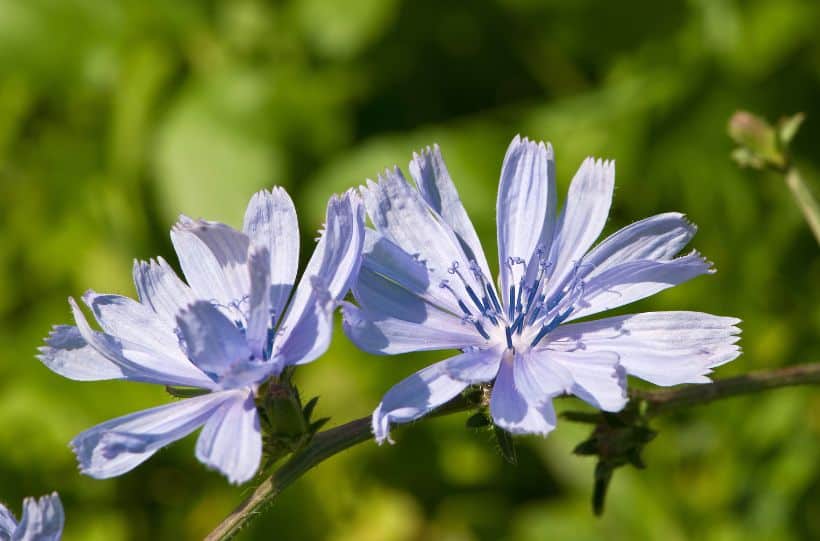
The chicory leaves have a slightly bitter and sour flavor. Chicory also contains natural polysaccharides that make the weed commercially valuable as additives in the manufacture of natural food sweeteners.
Purslane (Portulaca oleracea)
Also known as little hogweed, Purslane is perhaps one of the weeds with numerous health benefits on this list. It contains vitamins A and C that help in cell regeneration and blood clotting.
It also contains beta-carotene, an antioxidant that helps fight cancerous cells. Other minerals inside Purslane include potassium, calcium, iron, folate, magnesium, and choline.

The leaves, stems, and flowers of purslane are edible but ensure you wash thoroughly to get rid of pesticides on the leaves. You can add purslane to your diet in several ways: as salads, as garnishes, adding to soups, or as a side dish.
Sheep Sorrel (Rumex acetosella)
Sheep sorrel also contains several health benefits. It is a common lawn plant that grows well in the summer.
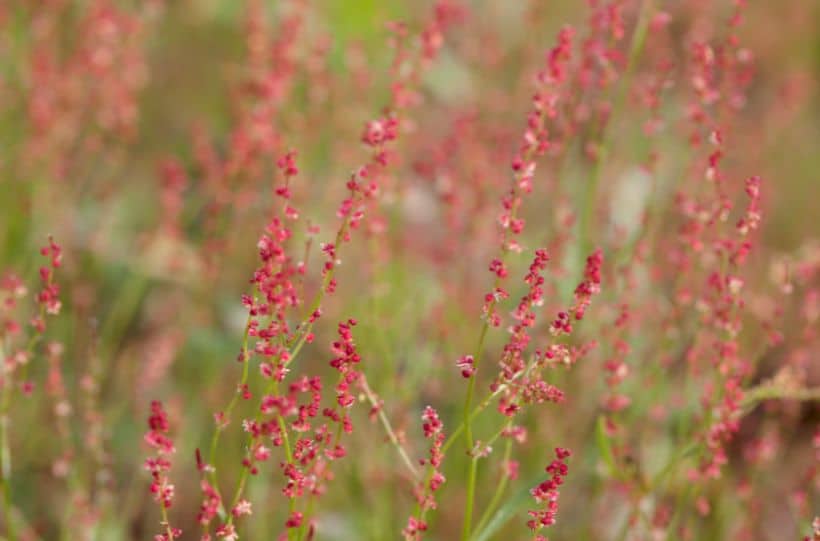
Its portfolio of healthy nutrients includes Vitamin B, C, D, E, and K. It also contains potassium, phosphorus, magnesium, and beta-carotene.
The sour taste (from its oxalic acid components) makes this weed a great addition to salads. There are claims that Sheep sorrel has anti-inflammatory properties.
Lambs Quarters (Chenopodium album)
Most of the lambs quarters plant parts are edible, including the stems, flowers, and leaves. Lambs quarters, also known as wild spinach, contain numerous healthy nutrients including vitamin A, C, folate, magnesium, phosphorus, and iron.
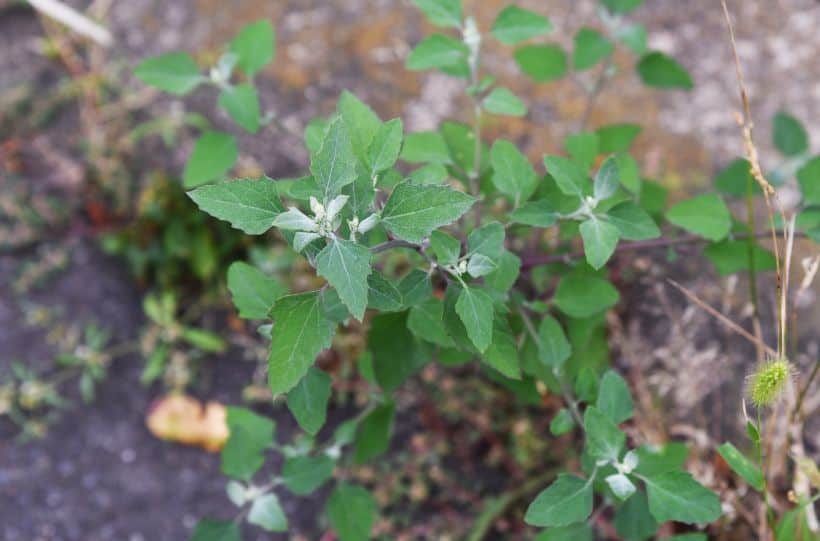
As a member of the goosefoot family (where spinach and beets belong), lambs quarters also contain oxalates and should be used in moderation by people suffering from gout, arthritis, or gastric issues.
Lambs quarters is also a great companion plant. It is easy to distinguish the weed from others because of its characteristic broad leaves.
Garlic Mustard (Alliaria petiolata)
Garlic mustard is considered to be an invasive weed, thanks to growing fast and occupying a large area within a short period.
If you are considering trying out garlic mustard, harvest it while it is young because the leaves become bitter as the plant grows. The mature leaves also contain traces of cyanide and should be taken in moderation.
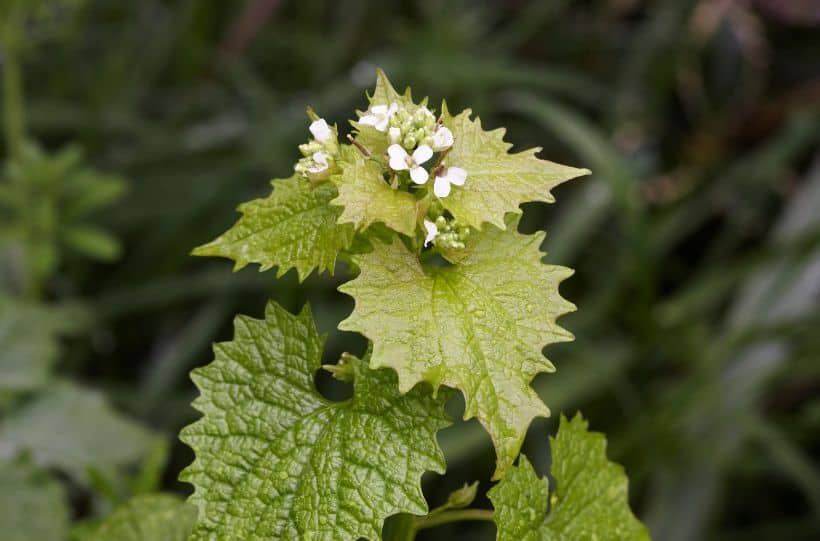
Garlic mustard can be added to stews or soups as a spice. It can also be added to salads or chopped for use as a seasoning herb.
Dandelion (Taraxacum officinale)
Dandelion is a useful weed that is edible for both humans and animals. This perennial weed is native to Europe and Asia and was introduced to America by the European colonists.
Its value goes beyond culinary uses and into medicine, where people used the plant to cure disorders including fighting inflammation, aiding weight loss, flu, and blood sugar management. The entire plant (apart from the bitter, sappy stem) is edible.

The flowers contain antioxidants and vitamins A and B12. The leaves contain vitamins, sodium, and potassium and can be used for salads or in stews. The roots can be dried and crushed to add to soups as a spice.
Bittercress (Cardamine hirsuta)
Bittercress has a strong pepper flavor that makes this weed popular in the preparation of different culinary dishes. It is a hardy, frost-resistant plant that blooms in the fall and stays throughout the winter.
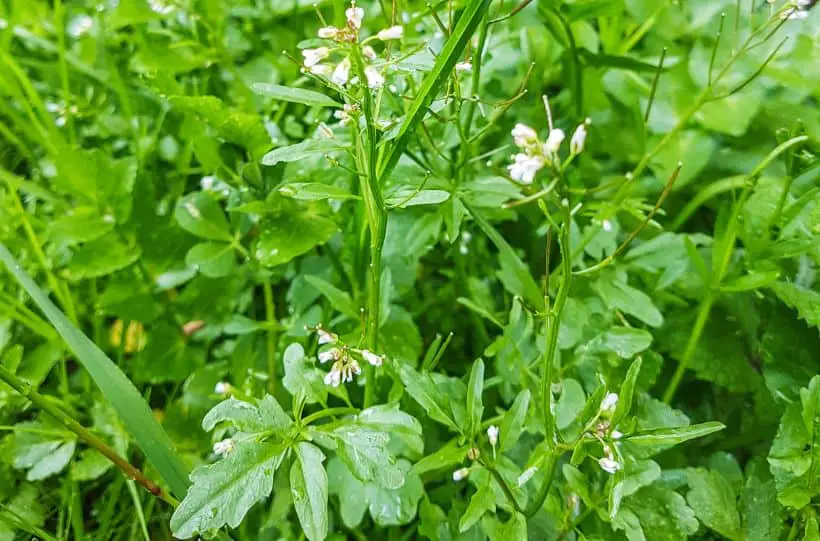
It can be eaten both raw and cooked. The stems are bitter. The leaves have a peppery flavor that will stay in your system for some time.
You can use bittercress in soups, salads, garnishes, or stews. The plant is an excellent source of vitamin C and beta-carotene. Since the plant is a member of the brassica family, it also contains glucosinolates that help get rid of cancer-causing carcinogens in the body.
Cleavers Bedstraw (Galium aparine)
Cleavers bedstraw has a variety of names, all inspired by its characteristics of the tendency to hold and stick onto things. It is known as catchweed, grip grass, or sticky weed – depending on your location. The weed is native to Europe and some parts of Asia.
The leaves and stems have tiny ‘hair-like’ substances sticking out of them. These give the plant the ability to hold into things. The shoots and leaves of the plant are edible.
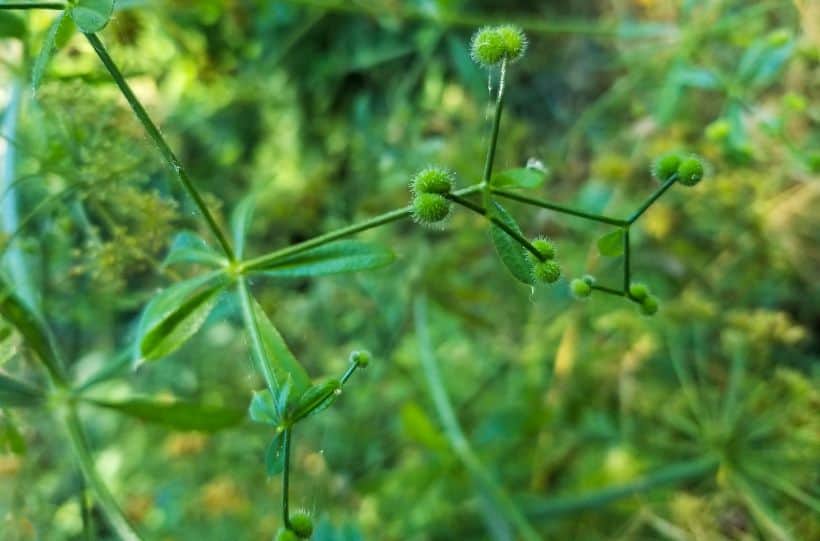
I should probably warn you that the weed has a pungent flavor. The best way to consume cleavers would be by cooking them in a stew because the bitter taste goes away after cooking.
Stinging Nettles (Urtica dioica)
Stinging nettles is another weed that has many health benefits. I think this is among the most undervalued plants because it has numerous health, culinary, and medical benefits.
They are very nutritious and are an excellent and flavorful addition to almost any dish or stew. The name stems from their ability to sting when one is picking them, so wear sturdy gloves.
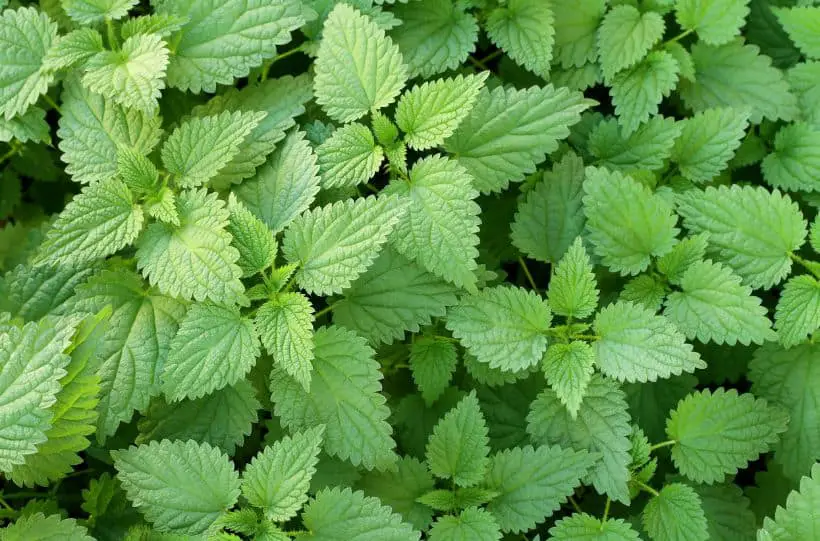
Pick the young leaves and cook them well to get rid of this ‘stinging’ ability. You can also dry the leaves and add them to tea for the treatment of fever, anemia, and arthritis.
The plant is also known for blood purification, controlling internal hemorrhage, controlling excessive menstruation, and managing rheumatism.
If you’d like to learn more about medicinal plants, check out these next:

